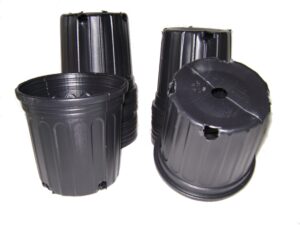
Growing pumpkins in pots is not only possible but can also be a rewarding experience for gardeners limited by space or soil conditions. In this article, we’ll explore the ins and outs of cultivating pumpkins in containers, from selecting the right pot to harvesting the fruits of your labor.
I. Introduction
A. Exploring Pumpkin Cultivation in Containers While traditionally grown in expansive fields, pumpkins can thrive in containers, offering urban and small-space gardeners the opportunity to enjoy their own homegrown harvests.
B. Advantages of Growing Pumpkins in Pots Container gardening provides greater control over soil quality, moisture levels, and space requirements, allowing for tailored growing conditions and efficient space utilization.
C. Considerations Before Starting Before embarking on container pumpkin cultivation, it’s essential to understand the specific requirements and challenges associated with this method, ensuring a successful and fruitful harvest.
II. Selecting the Right Container
A. Size and Depth Requirements
1. Optimal Container Dimensions Pumpkin plants have extensive root systems and require large containers with adequate depth to accommodate their growth and development.
2. Importance of Sufficient Root Space Insufficient root space can lead to stunted growth and reduced fruit production, emphasizing the need for appropriately sized containers to support healthy plant growth.
B. Material and Drainage
1. Suitable Container Materials Containers made of durable materials such as plastic, ceramic, or fabric are ideal for growing pumpkins, providing stability and longevity throughout the growing season.
2. Ensuring Proper Drainage Proper drainage is crucial for preventing waterlogged soil and root rot, necessitating the inclusion of drainage holes in the container’s base and the use of well-draining potting mix.
III. Choosing the Right Pumpkin Variety
A. Compact and Bush-Type Varieties
1. Characteristics of Compact Pumpkins Compact pumpkin varieties are well-suited for container gardening, featuring smaller vine lengths and more manageable growth habits.
2. Recommended Bush-Type Varieties Bush-type pumpkin varieties, such as ‘Baby Bear’ or ‘Jack Be Little,’ are popular choices for container cultivation due to their compact size and prolific fruit production.
B. Determining Space and Growth Habit
1. Understanding Pumpkin Growth Habits Different pumpkin varieties exhibit varying growth habits, including sprawling vines or compact bush-like forms, necessitating consideration of space requirements and container size.
2. Matching Variety to Container Size Selecting pumpkin varieties that match the available container size ensures optimal growth and prevents overcrowding, promoting healthier plants and higher yields.
IV. Planting and Care Tips
A. Soil and Fertilizer Requirements
1. Selecting Well-Draining Potting Mix Choose a high-quality potting mix specifically formulated for container gardening, providing adequate aeration and drainage for optimal root health.
2. Fertilization Needs for Container-Grown Pumpkins Container-grown pumpkins may require regular fertilization to replenish nutrients, with balanced formulations or organic options recommended for sustained growth.
B. Watering and Sunlight
1. Monitoring Moisture Levels Maintain consistent soil moisture levels by watering container-grown pumpkins regularly, adjusting frequency based on environmental conditions and plant growth stage.
2. Providing Adequate Sunlight Position containers in sunny locations with at least six to eight hours of direct sunlight daily, ensuring proper photosynthesis and healthy fruit development.
C. Supporting and Training
1. Staking or Trellising for Support Provide support for sprawling pumpkin vines by staking or trellising them, reducing ground contact and minimizing the risk of disease and pest infestations.
2. Pruning and Training Vine Growth Prune excess foliage and encourage vertical growth by training pumpkin vines, promoting better air circulation and sunlight penetration for improved fruit quality.
V. Harvesting and Enjoying Container-Grown Pumpkins
A. Signs of Ripeness
1. Visual Cues for Harvesting Monitor pumpkin fruits for signs of ripeness, including deep coloration, firm rinds, and dried stems, indicating readiness for harvest.
2. Testing Maturity for Ideal Flavor Perform a thumbnail test or tap test to assess pumpkin ripeness, ensuring optimal flavor and texture for culinary use or decorative purposes.
B. Harvesting Techniques
1. Proper Harvesting Tools and Methods Use sharp garden shears or a knife to cut pumpkins from the vine, leaving a few inches of stem attached to the fruit to prolong shelf life and prevent premature rotting.
2. Handling and Storing Pumpkins Post-Harvest Handle harvested pumpkins with care to avoid bruising or damage, storing them in a cool, dry place with good airflow to prolong shelf life and maintain quality.






